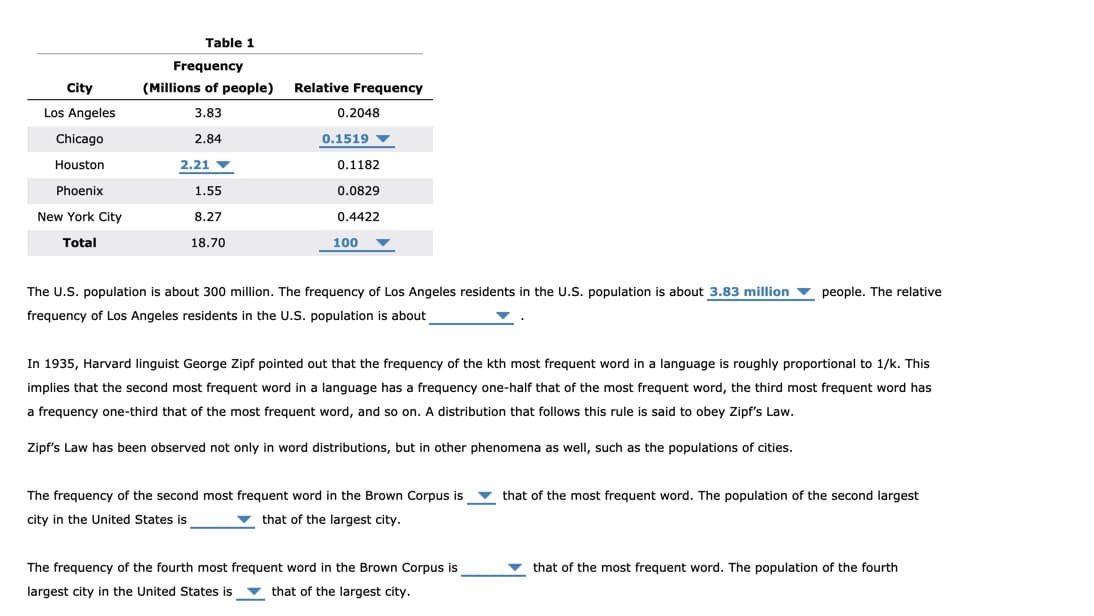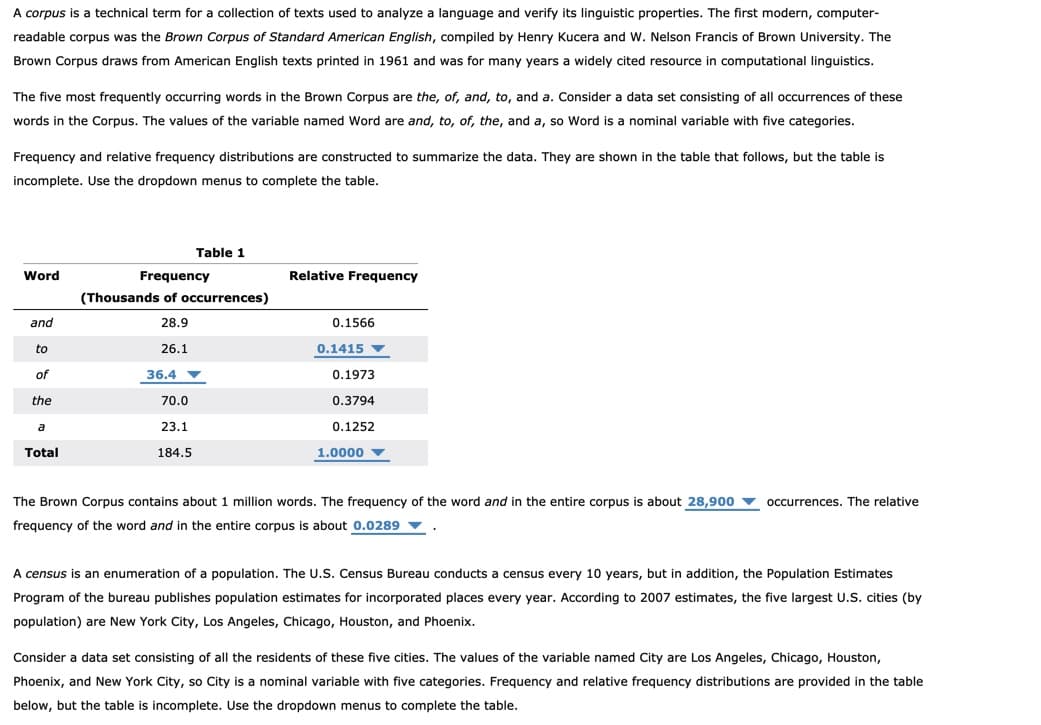Table 1 Frequency City (Millions of people) Relative Frequency Los Angeles 3.83 0.2048 Chicago 2.84 0.1519 Houston 2.21 0.1182 Phoenix 1.55 0.0829 New York City 8.27 0.4422 Total 18.70 100 The U.S. population is about 300 million. The frequency of Los Angeles residents in the U.S. population is about 3.83 million people. The relative frequency of Los Angeles residents in the U.S. population is about In 1935, Harvard linguist George Zipf pointed out that the frequency of the kth most frequent word in a language is roughly proportional to 1/k. This implies that the second most frequent word in a language has a frequency one-half that of the most frequent word, the third most frequent word has a frequency one-third that of the most frequent word, and so on. A distribution that follows this rule is said to obey Zipf's Law. Zipf's Law has been observed not only in word distributions, but in other phenomena as well, such as the populations of cities. The frequency of the second most frequent word in the Brown Corpus is that of the most frequent word. The population of the second largest city in the United States is that of the largest city. The frequency of the fourth most frequent word in the Brown Corpus is that of the most frequent word. The population of the fourth largest city in the United States is that of the largest city.
Family of Curves
A family of curves is a group of curves that are each described by a parametrization in which one or more variables are parameters. In general, the parameters have more complexity on the assembly of the curve than an ordinary linear transformation. These families appear commonly in the solution of differential equations. When a constant of integration is added, it is normally modified algebraically until it no longer replicates a plain linear transformation. The order of a differential equation depends on how many uncertain variables appear in the corresponding curve. The order of the differential equation acquired is two if two unknown variables exist in an equation belonging to this family.
XZ Plane
In order to understand XZ plane, it's helpful to understand two-dimensional and three-dimensional spaces. To plot a point on a plane, two numbers are needed, and these two numbers in the plane can be represented as an ordered pair (a,b) where a and b are real numbers and a is the horizontal coordinate and b is the vertical coordinate. This type of plane is called two-dimensional and it contains two perpendicular axes, the horizontal axis, and the vertical axis.
Euclidean Geometry
Geometry is the branch of mathematics that deals with flat surfaces like lines, angles, points, two-dimensional figures, etc. In Euclidean geometry, one studies the geometrical shapes that rely on different theorems and axioms. This (pure mathematics) geometry was introduced by the Greek mathematician Euclid, and that is why it is called Euclidean geometry. Euclid explained this in his book named 'elements'. Euclid's method in Euclidean geometry involves handling a small group of innately captivate axioms and incorporating many of these other propositions. The elements written by Euclid are the fundamentals for the study of geometry from a modern mathematical perspective. Elements comprise Euclidean theories, postulates, axioms, construction, and mathematical proofs of propositions.
Lines and Angles
In a two-dimensional plane, a line is simply a figure that joins two points. Usually, lines are used for presenting objects that are straight in shape and have minimal depth or width.
2 2


Trending now
This is a popular solution!
Step by step
Solved in 2 steps






